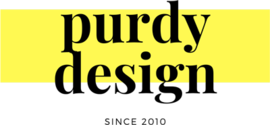Finding great loan offers takes a lot of digging for most homeowners. There are countless lenders out there, but finding a lender that’s willing to work with you on the terms that best suit your needs can seem like a losing battle for many borrowers.
However, this is because the process of securing funding—for your business, home, or anything else—starts long before the paperwork is filed. It takes a long history of credit score improvements, financial acumen, and saving habits to create the perfect lending opportunity for any loan amount that you may be seeking. With this helpful guide, you can get started on these initial steps today to ensure a great lending experience in the future.
Good cash flow begets favorable interest rates.

Cash flow is at the heart of any successful financial situation. Simply put, you need to bring in more than you spend every week, month, and year. However, when approaching issues of cash flow, many homeowners overlook the emergency spending that can often wreck a budget. Studies have shown that most Americans couldn’t weather a $1,000 emergency without relying on a credit card to cover the expense and going farther into debt in the process.
In business, quick funding for an expense (typically one you’ve planned for, however) is called a bridge loan. Bridge loans are a great way to push a financial squeeze into the next quarter or trading year in order to maintain your contacts and business relationships as you wait for a coming windfall. For more on local bridge loan options in a specific state, search for “bridge loans in Oregon” or wherever you reside.
In your personal finances, however, bridge loans can be a risky proposition. If you aren’t already a small business owner or entrepreneur, the ability to quickly dig yourself back out of debt may rely on a once-off tax refund or other bonus that isn’t always a sure thing. Maintaining a highly functional cash flow that cuts out unnecessary spending so that you can save for these unforeseen issues is the best way to ensure that when you do borrow money, it will come at a favorable annual percentage rate (APR) or simply an interest rate.
Home loans require a long savings horizon.

In addition to good cash flow habits that see your finances remain afloat through even the most dramatic of emergencies, you will want to save a portion of your income every month. In order to secure favorable variable or fixed home loan rates that will get you into your new house without breaking the bank, you will need a down payment and a history of making saving a priority.
The best way to ensure that you’ll benefit from your mortgage loan is to begin saving today, even if you aren’t currently planning on buying a home any time soon. A down payment typically runs around 20 percent of the total property cost, so saving for this expense can take well over a year, even for the most aggressive savers. Planning years in advance naturally boosts your credit score as well. By prioritizing good financial habits you will also tackle any flagrant spending and rollover credit card balances that affect your ability to put away cash for that major expense in your future.
A mortgage rate is based largely on your financial acumen and seeming responsibility with money. By showing a lender that you not only can make your monthly payments without any strain, but also that you pay debts promptly, save regularly, and prioritize your responsibilities, you can save tens of thousands of dollars over the life of the loan with a lower interest rate.
Responsible savers can take advantage of both sides of good fiscal stewardship. Make sure you shop around and plan for these expenses and borrowing events long in advance to get the best deal.





